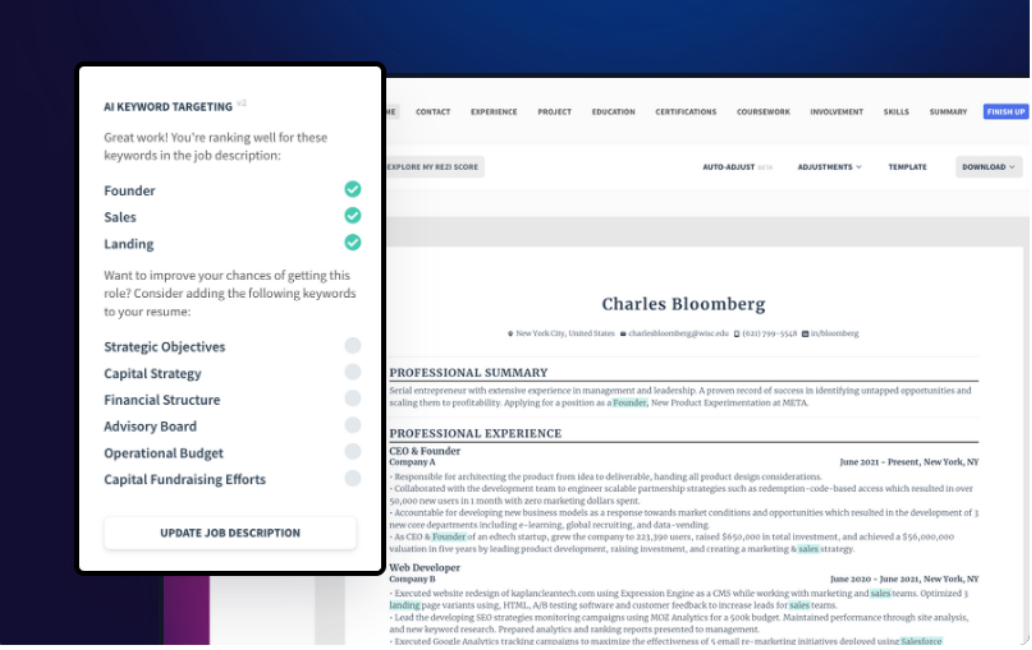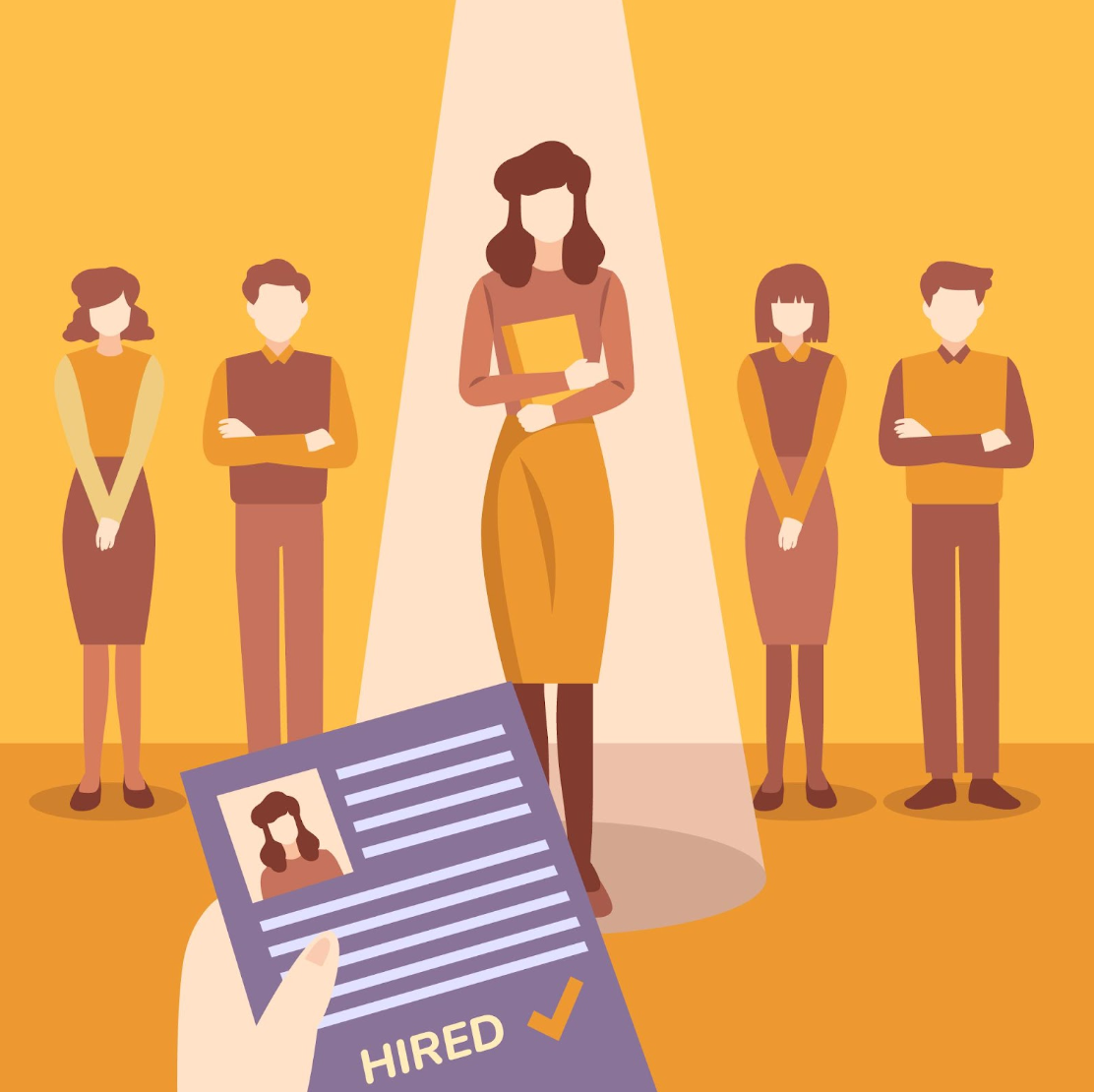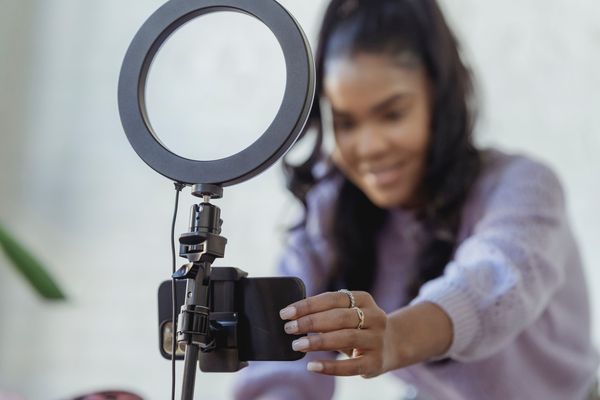How To Land Your First UX Designer Job Using These 6 Resume Tips
Landing a good job these days is not simple. The competition is big, and so are the demands. When you’re just out of school or looking to make a career change, the challenge is even greater.
You need to pique the interest of employers who receive hundreds of resumes, possibly even without having any real experience in the field. If you are looking to land your first UX designer job, it all starts with - and depends on the resume.
The resume is your first impression with most employers. On average, an employer will receive 118 resumes for the same vacancy.
This means that they’ll dedicate only seconds per resume when checking them, and eliminate most of the candidates without giving it much thought. It’s a tough reality, but that’s how it works.
If you are looking to land your first UX designer job, creating a resume that catches the employer’s eye is even harder.
Approximately 53% of college graduates today settle for a job that doesn’t fit their skills or are unemployed. They simply didn’t find a way to stand out in the crowd and couldn’t land any of the jobs they applied for.
So, what can be done?
What if we told you that you can increase your chances to land a good job in UX design just by improving your resume?
A good resume makes it much more likely that your application will get noticed. Before you send yours out or post it on job pages, you should make sure it looks amazing.
In this article, we’ll do exactly that - teach you how to land your first UX designer job by improving your resume.
Do you have a ready resume?
Do you already have a resume you are using to apply for work? You don’t necessarily have to start from scratch if your resume is good.
However, it could definitely use some tweaks if you aren’t getting the results you need. One of the first steps to take to boost your hiring chances is to polish your resume. Here are some tips that will help you achieve that:
1. Use the right platforms to send out your resume
One of the reasons why your resume is not getting you any callbacks might be that you’re not sending it to the right places.
What you need to stand out from the crowd is to find a platform where employers go to search for good talent. Make yourself available on platforms that employers trust, and don’t be afraid to spend some time optimizing your profile on them.
When employers are hiring a UX designer for their team, they search for more than just a resume. Platforms like Uxcel make it possible for them to check the applicants’ resumes, but also their portfolios, test scores, etc. This is your chance to prove your worth and show employers that you have the skills necessary to do the job well.
Such sites are great places to look for open job positions, but it’s not enough just to post your resume or portfolio. Try to stand out by taking some tests to demonstrate your skills.
This is a great opportunity if you lack work experience to vouch for you. Uxcel is a good place to get started since it allows employers to hire vetted professionals from a big directory of UX designers. Make sure you’re one of them to increase your hiring chances.

2. Scan for keywords and optimize
Resume keywords are specific skills, abilities, and traits that hiring managers look for when they hire for the position in question. Have you included keywords in your resume? Are you certain that you are using the right keywords? Keywords are useful for 3 main reasons:
- They make your resume easy to find online.
- They help you impress applicant tracking systems
- They help you get your resume noticed.
Employers often manually search for good talent. If you use the right keywords in your resume, they can easily come across it online. This is how you make your resume findable.
Today, most companies will pre-scan the hundreds of applications they receive using applicant tracking systems. These systems eliminate most of the resumes in this first round without looking into them manually.
If your resume is not keyword-optimized, it might not even get into the hiring manager’s hands. Let’s say it gets to them. By using the right keywords, you are making sure that the resume catches the reader’s attention.
So, how do you know that your resume has the right keywords? You can do this by using a resume keyword scanner. A good keyword scanner will evaluate your existing resume against the key criteria of hiring managers. It will check it against the criteria that applicant tracking systems look into and give you insight into what you can change.

3. Consider changing the design layout
Any resume should look professional, but that of a UX designer should look amazing. This is an opportunity for you to show your designer skills. If your resume looks bad, how do you expect employers to trust your design skills?
When you design the resume, think about the user experience. Apply those principles you learned in your classes, the ones you use for the projects in your portfolio. Here are a few practices that will help you improve it:
- Keep it short. Employers have limited time to look at resumes. It can be tempting to put all your accomplishments in the resume, but this might be the reason why you aren’t getting callbacks. Trim the resume down to a single page or a maximum of 2 pages. Make sure to include the right information i.e. the information that matters to that particular company and can make you stand out.

- Keep it organized and readable. Use sections and headings and bolds and italics. These will help you better structure the content. They also make the resume more readable. Most employers skim a resume before they give it a more detailed look. Highlight your best qualifications and make them easy to find.
- Set a good color scheme. Keep it clean and professional. Use two colors at most. If you need more colors, use different shades of the same.
- Leave enough white space. Be generous with it. It will make your resume easier to skim.
- Choose the right font. Make sure it looks professional, is the right size, and is readable.
4. Edit and proofread
A single mistake in a resume can make you look unprofessional or unserious in the eyes of the hiring manager. If you didn’t take the time to proofread your own resume, are you really interested in the job they offer?
Make sure to give your resume another edit. Proofread for errors and edit the confusing or irrelevant parts. Make sure any links in it are working.
Need a new resume?
You don’t have a resume just yet? Don’t worry, we have some tips to get you started, too. Here is what you need to get there:
5. Make an outline
To create a good UX designer job resume, you need to include the right information in the right order. Here is a list of what you should consider adding:
- Your contact information. Make sure that this part is accurate. You don’t want to miss out on good opportunities because of a typo in your email address!
- Summary/objective. This part will highlight your best accomplishments and skills. You can also use it to talk about the role and your enthusiasm to work for the company.
- Experience. Include any professional or relevant experience, including volunteering, projects you’ve worked on, etc.
- Projects. Highlight the most relevant design projects. Add links to your portfolio if possible.
- Education. Include information about your degree and any relevant educational achievements.
- Skills. Include the skills that match the job description.
6. Personalize it to the job description
While this can take time, personalizing your resume for every job description separately can improve your chances of landing the job. Around 63% of employers prioritize resumes that are personalized for the position offered.
Based on the job description, highlight the skills they require, focus on the projects relevant to the position, and emphasize the qualifications that would best appeal to the hiring managers.

If you want to make it even better, research the company online. Go through their website and social media, read some news and articles about them, and learn about their hiring culture. Use this information to show them that you are really interested in the position.
If you decide to create a new resume, keep in mind that once you have it, you should still go through the first 4 tips we mentioned above.
Ready to land your first UX designer job?
Creating the perfect resume is not easy, and it’s a work in progress for every job you are applying for. But, when you do it, and you get a callback, it will all be worth it. Your resume is your way to stand out and land a great first job as a UX designer. Good luck!
Author bio:
Nadica Metuleva is a senior freelance writer with 8+ years of experience in producing original, high-quality content for clients. She has a Master’s degree in English Literature and Teaching and speaks 4 languages. Nadica has a passion for storytelling and a deep understanding of SEO principles. You can find her samples and more details about her work on LinkedIn.



